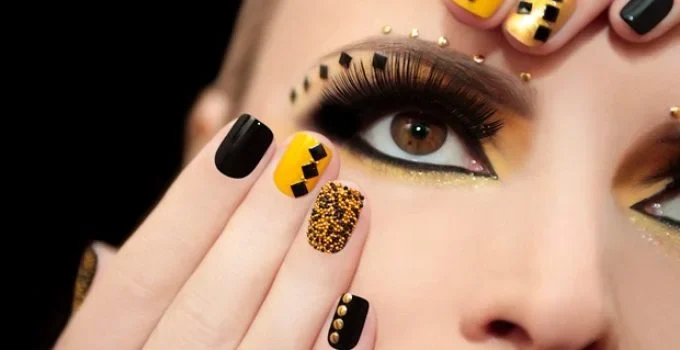Fingernails may seem static, but they are dynamic structures continuously growing through a finely tuned biological process. The source of this growth is the nail matrix, a specialized tissue hidden beneath the base of the nail. This article explores the anatomy of the nail matrix, the cellular mechanisms of keratinization, and the journey cells take from origin to hardened nail plate.
🔍 Dive Deeper
- What Is the Nail Matrix?
- The Growth Process of Fingernails
- How Cells Differentiate and Harden
- Fingernail Growth Rate and Influencing Factors
- Table: Layers of the Fingernail and Their Functions
- 🎯 Final Thoughts
- 📚 References
What Is the Nail Matrix?
The nail matrix, also called the “matrix unguis” or “keratogenous membrane,” is the tissue located underneath the skin at the base of the nail, just beneath the cuticle and proximal nail fold. It is not visible in its entirety, although part of it appears as the lunula—the whitish half-moon at the nail’s base.
The matrix is where new nail cells are generated. These cells, known as keratinocytes, are part of the stratum basale and stratum spinosum—the lowest layers of the epidermis, specialized for rapid cell division and growth [1].
The Growth Process of Fingernails
Fingernails grow via keratinization, a process where newly formed keratinocytes push older cells forward. As these cells are pushed out of the matrix and toward the fingertip, they lose their nuclei and become filled with hard keratin.
| 📊 Interesting Stat
According to the American Academy of Dermatology, fingernails grow at an average rate of 3.5 millimeters per month—or about 0.1 mm per day [2]. |
This growth happens in three phases:
- Proliferation Phase: Cells divide rapidly in the matrix.
- Transition Phase: Cells begin moving outward and start producing keratin.
- Terminal Differentiation: Cells harden, flatten, and become the nail plate.
How Cells Differentiate and Harden
Unlike skin, which uses soft keratin, fingernails are composed of hard keratin—a fibrous protein rich in sulfur-containing amino acids like cysteine. As the cells leave the matrix, they:
- Lose moisture and become dehydrated.
- Undergo keratin cross-linking, creating a rigid, durable structure.
- Die completely, forming the visible, translucent nail plate.
The nail plate itself is made of three layers:
- Dorsal layer: The topmost layer, hardest and smoothest.
- Intermediate layer: Thickest and most fibrous.
- Ventral layer: Closest to the nail bed, provides adhesion.
The movement of these cells is continuous. They remain anchored to the nail bed, a vascularized region beneath the nail that supplies nutrients and supports growth, until they reach the free edge and eventually wear down or are trimmed.
Fingernail Growth Rate and Influencing Factors
While nail growth is continuous, several factors can influence its rate:
- Age: Children’s nails grow faster than adults’.
- Dominant hand: Nails on the dominant hand often grow more quickly.
- Seasonality: Growth can accelerate in summer months due to increased circulation.
- Gender: Male nails often grow faster than female nails, except during pregnancy [3].
Table: Layers of the Fingernail and Their Functions
| Structure | Location | Function |
|---|---|---|
| Nail Matrix | Beneath proximal nail fold | Produces new keratinocytes |
| Nail Plate | Visible nail | Protects fingertip, aids in fine motor tasks |
| Nail Bed | Under nail plate | Nourishes and supports the nail |
| Lunula | Visible part of matrix | Indicator of nail health and growth activity |
| Cuticle (Eponychium) | Skin overlap at nail base | Shields matrix from infection |
| Hyponychium | Under free nail edge | Protects nail bed and fingertip from pathogens |
🎯 Final Thoughts
Fingernails are more than cosmetic extensions of our fingers—they are the visible results of a complex biological process driven by cellular activity in the nail matrix. From proliferating keratinocytes to hardened layers of keratin, the growth of a fingernail is a seamless interplay of anatomy, physiology, and protein chemistry. Understanding this natural assembly line not only illuminates our body’s intricacies but also deepens appreciation for a structure we use daily, often without a second thought.
📚 References
- Baran, R., Dawber, R. P. R. (2003). Diseases of the Nails and their Management. Blackwell Science.
- American Academy of Dermatology Association. “Nail care basics.” https://www.aad.org/public/everyday-care/nail-care
- Zaias, N. (1990). The Nail in Health and Disease. Appleton & Lange.
- Drake, R. L., Vogl, A. W., & Mitchell, A. W. M. (2014). Gray’s Anatomy for Students. Elsevier Health Sciences.
- de Berker, D. (2000). “Anatomy of the nail unit and the nail biopsy.” Dermatologic Surgery, 26(3), 275–280.
